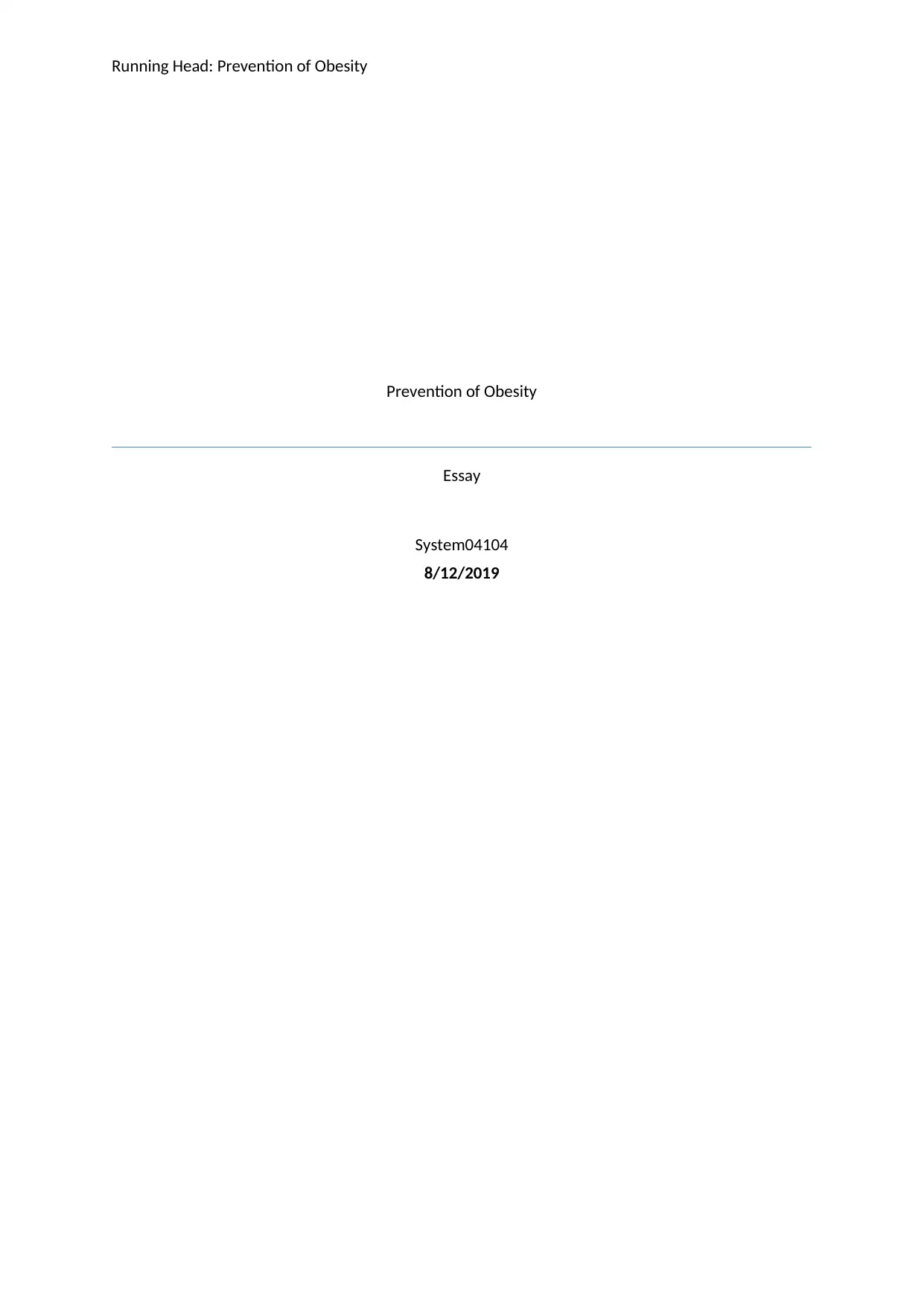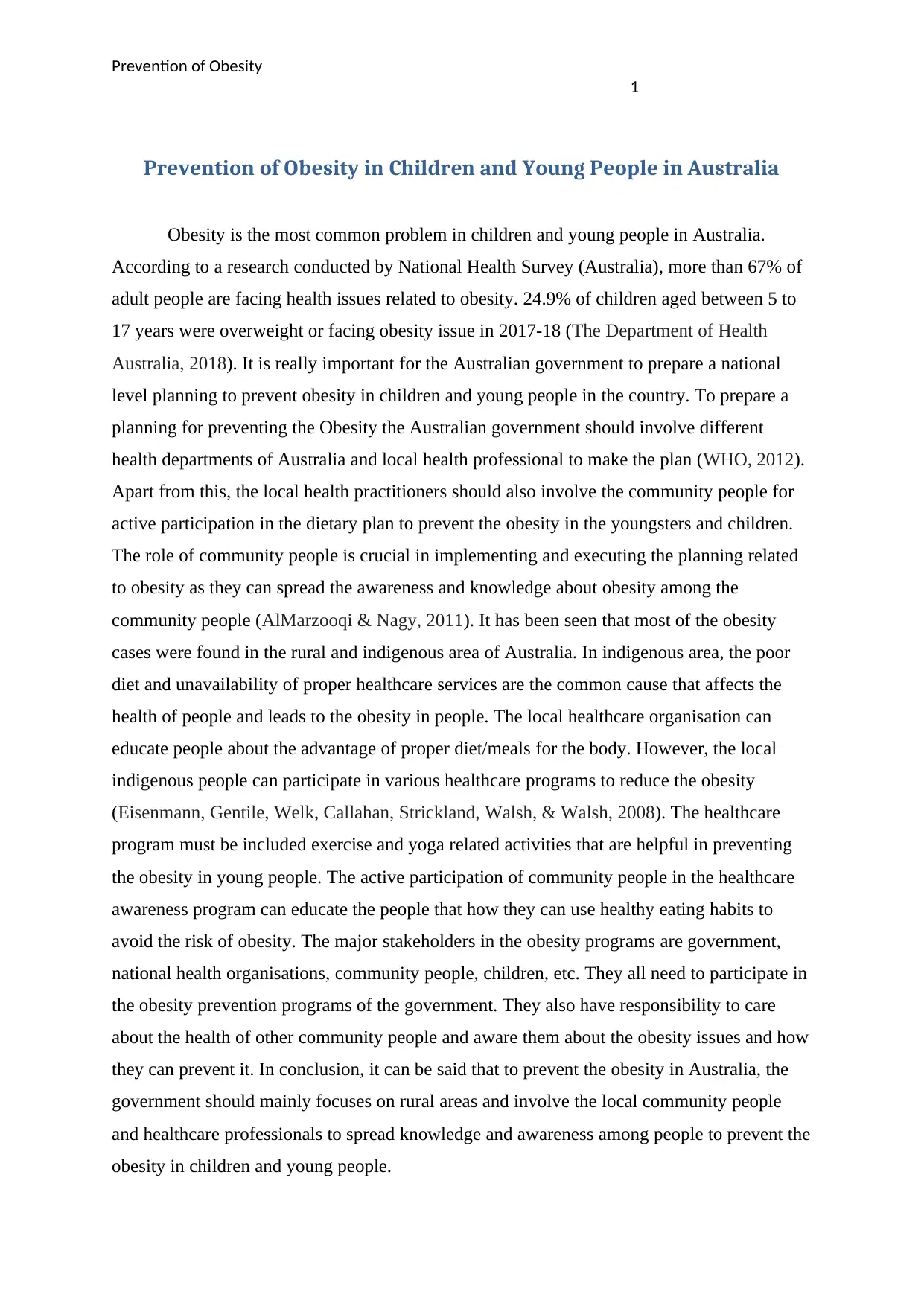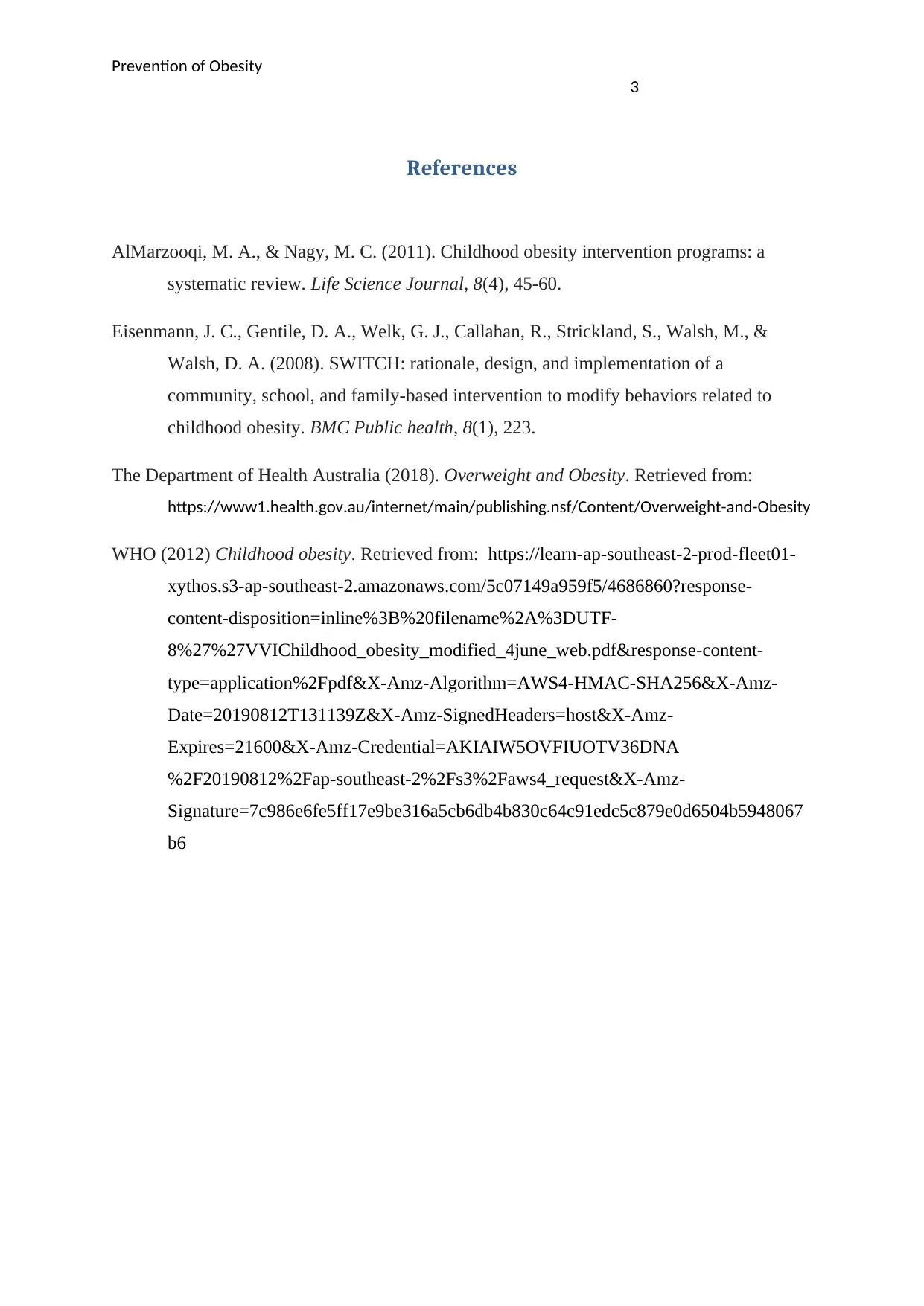Prevention of Childhood Obesity in Australia: A Report
VerifiedAdded on 2022/10/01
|4
|668
|32
Report
AI Summary
This report addresses the critical issue of obesity prevention among children and young people in Australia. It highlights the alarming statistics, with over 24% of children aged 5-17 being overweight or obese. The report emphasizes the need for a national-level plan, involving various health departments and local health professionals. Community engagement is deemed crucial, particularly in rural and indigenous areas, where poor diets and lack of healthcare access contribute to the problem. The report suggests healthcare programs that incorporate exercise and yoga, alongside education on healthy eating habits. Key stakeholders, including the government, national health organizations, community members, and children, are identified as essential participants in obesity prevention initiatives. The conclusion underscores the importance of focusing on rural areas and leveraging community involvement and healthcare professionals to spread awareness and knowledge about obesity prevention. The report references several studies and resources to support its findings and recommendations.
1 out of 4











![[object Object]](/_next/static/media/star-bottom.7253800d.svg)